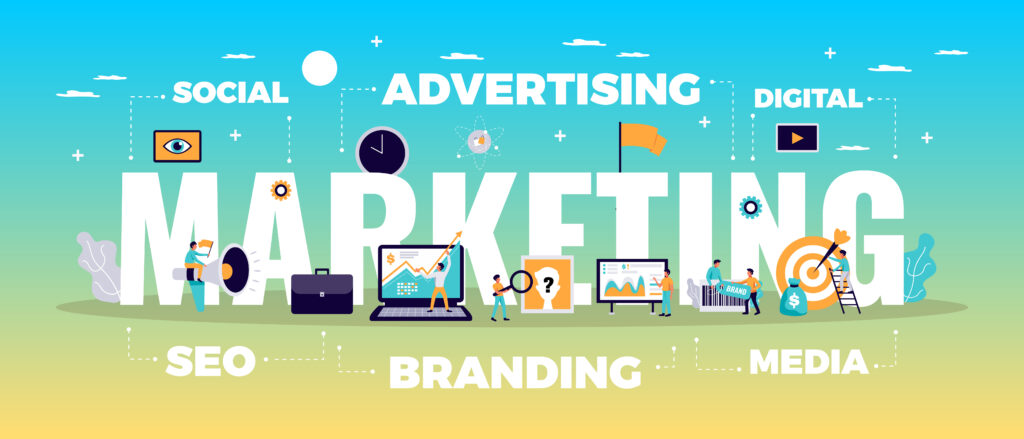Unveiling the Secrets: Exploring the 7 Different Types of Digital Marketing
In today’s digital age, marketing has taken on a whole new level with the introduction of various digital strategies. From social media to email campaigns, businesses are constantly on the lookout for the most effective methods to reach their target audience. But with so many options available, it can be overwhelming to navigate through the different types of digital marketing. In this article, we aim to unveil the secrets and explore the diverse landscape of digital marketing. We will delve into the strengths and weaknesses of each method, providing you with a comprehensive understanding of which strategy might work best for your business. Whether you’re a seasoned marketer or just starting out, this article will equip you with the knowledge to make informed decisions when it comes to digital marketing. So, join us as we dissect the world of digital marketing and uncover the strategies that can propel your business to new heights. The importance of digital marketing for businesses In today’s digital landscape, having a robust digital marketing strategy has become crucial for businesses of all sizes. As the world becomes increasingly connected through the internet, consumers are spending more time online, searching for products, services, and information. This shift in consumer behavior has created a significant opportunity for businesses to reach and engage with their target audience in ways that were previously unimaginable. Digital marketing offers businesses a cost-effective and measurable way to promote their products or services, build brand awareness, and ultimately drive sales. Unlike traditional marketing methods, digital marketing allows for real-time data and analytics, enabling businesses to track the performance of their campaigns and make data-driven decisions to optimize their strategies. This level of transparency and accountability is a significant advantage for businesses, as it allows them to allocate their marketing resources more effectively and maximize their return on investment (ROI). Furthermore, digital marketing provides businesses with the ability to target their audience with laser-like precision. Through the use of various digital marketing tactics, such as search engine optimization (SEO), pay-per-click (PPC) advertising, and social media marketing, businesses can reach specific demographics, interests, and behaviors, ensuring that their message is delivered to the right people at the right time. This level of targeting not only increases the effectiveness of marketing campaigns but also helps to build stronger, more meaningful relationships with customers. Search engine optimization (SEO) Search engine optimization (SEO) is a fundamental aspect of digital marketing that focuses on improving the visibility and ranking of a website in search engine results pages (SERPs). The primary goal of SEO is to ensure that a website appears as high as possible in the organic (non-paid) search results, making it more likely that potential customers will find and engage with the business. One of the key components of SEO is keyword research, which involves identifying the terms and phrases that potential customers are using to search for products or services related to a business. By optimizing the website’s content, structure, and metadata to target these keywords, businesses can improve their chances of appearing in the top search results for relevant queries. This can lead to increased website traffic, higher engagement, and ultimately, more conversions and sales. In addition to keyword optimization, SEO also involves a range of other technical and on-page factors, such as website speed, mobile responsiveness, and the quality and relevance of the content. Search engines like Google use complex algorithms to evaluate these factors and determine the overall “search engine friendliness” of a website. By addressing these elements, businesses can enhance their website’s visibility and credibility in the eyes of both search engines and users. Pay-per-click (PPC) advertising Pay-per-click (PPC) advertising is a digital marketing strategy that involves the placement of ads on search engine results pages (SERPs) or other websites, with the advertiser paying a fee each time a user clicks on the ad. This form of advertising allows businesses to target specific keywords, demographics, and user behaviors, ensuring that their ads are shown to the most relevant audience. One of the key advantages of PPC advertising is its measurability. Businesses can track the performance of their PPC campaigns in real-time, monitoring metrics such as click-through rate (CTR), conversion rate, and cost-per-acquisition (CPA). This data can then be used to optimize the campaign, adjusting bids, ad copy, and targeting to improve the overall return on investment (ROI). Another benefit of PPC advertising is its flexibility. Businesses can quickly adjust their campaigns in response to changing market conditions, seasonality, or customer behavior. This agility allows them to capitalize on emerging trends and opportunities, and to pivot their strategies as needed to achieve their marketing objectives. Content marketing Content marketing is a digital marketing strategy that focuses on creating and distributing valuable, relevant, and engaging content to attract and retain a targeted audience. This approach aims to establish a business as a trusted authority in its industry, ultimately driving conversions and building long-term customer relationships. At the heart of content marketing is the creation of high-quality, informative, and entertaining content that addresses the needs and pain points of the target audience. This can take many forms, including blog posts, videos, podcasts, infographics, and social media updates. By providing value to the audience, businesses can build brand awareness, increase engagement, and position themselves as thought leaders in their respective fields. Effective content marketing also involves the strategic distribution and promotion of this content across various digital channels, such as search engines, social media platforms, and email newsletters. By leveraging these channels, businesses can reach a wider audience, drive traffic to their website, and ultimately, convert more leads into customers. Social media marketing Social media marketing is a digital marketing strategy that leverages the power of social media platforms to connect with and engage a target audience. This approach allows businesses to build brand awareness, foster customer relationships, and drive conversions through a variety of social media tactics. One of the key advantages of social media marketing is the ability to
Unveiling the Secrets: Exploring the 7 Different Types of Digital Marketing Read Post »

